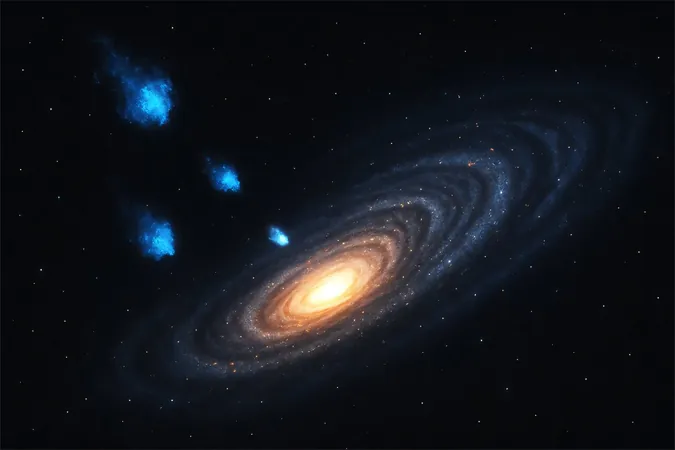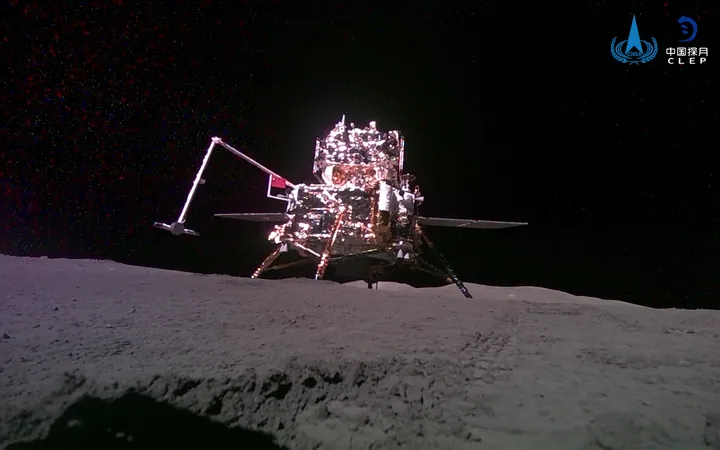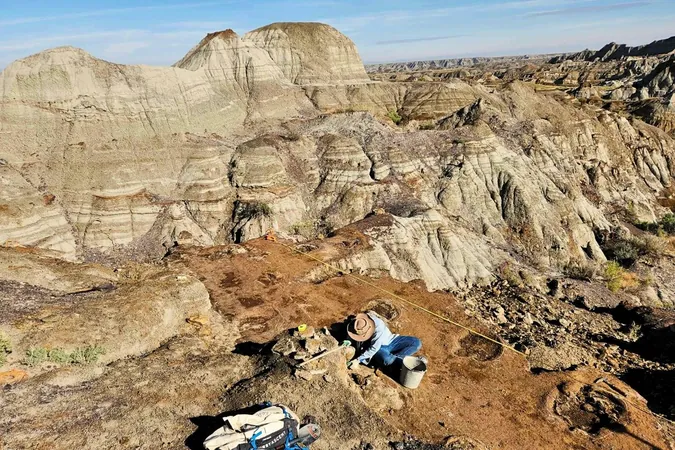
Revolutionary Discovery in M83: High-Velocity Molecular Clouds Transform Our Understanding of Galaxy Evolution!
2025-07-01
Author: Emma
Unveiling the Cosmic Mystery of M83
In an extraordinary breakthrough, researchers using the Atacama Large Millimeter/submillimeter Array (ALMA) Telescope have identified ten high-velocity molecular clouds in the Southern Pinwheel Galaxy, M83. These clouds are zooming through space at speeds that are tellingly different from the galaxy's normal rotation, hinting that they are cosmic imports vital for star formation.
A Global Collaborative Effort
Led by Professor Jin Koda from Stony Brook University, this ambitious study involved collaborations with astrophysicists Maki Nagata and Fumi Egusa from the University of Tokyo, alongside a rich international team. Their findings have made waves in the latest edition of The Astrophysical Journal.
The Essential Role of Gas in Galactic Evolution
Stars and gas form the backbone of galaxies, with gases being the material needed for new star births. Without external gas supplies, a galaxy’s internal resources would dwindle within about one billion years, bringing star formation to a standstill. By investigating M83’s molecular gas composition, scientists are piecing together the long-term evolution of galaxies.
Comparative Insights: M83 and the Milky Way
Professor Koda notes the striking resemblance between M83 and our own Milky Way, suggesting that insights gained from one may illuminate the mysteries of the other. This research could not only reshape our understanding of M83 but also offer vital clues into star formation processes in our galactic neighborhood.
A Breakthrough Analysis of Cosmic Gas
The research team meticulously analyzed high-sensitivity data from ALMA, leading to the revelation of these ten remarkable clouds filled with molecular gas. Interestingly, these clouds don’t appear to correlate with any known supernova remnants within M83, raising intriguing questions.
Theories Behind the High-Velocity Clouds
Egusa proposes two compelling scenarios regarding these gas clouds: they might be gas that has been directly drawn into M83 from outside, or they could be gas previously ejected by supernova explosions that has since returned due to gravitational forces. However, the immense kinetic energy observed suggests that these clouds likely originate from beyond the galaxy.
Paving the Way for Future Galactic Studies
According to the researchers, this comprehensive investigation marks the first systematic examination of high-velocity molecular clouds in nearby galaxies. This insight opens exciting new avenues to explore cosmic evolution, promising to redefine how we understand the life cycle of galaxies.









 Brasil (PT)
Brasil (PT)
 Canada (EN)
Canada (EN)
 Chile (ES)
Chile (ES)
 Česko (CS)
Česko (CS)
 대한민국 (KO)
대한민국 (KO)
 España (ES)
España (ES)
 France (FR)
France (FR)
 Hong Kong (EN)
Hong Kong (EN)
 Italia (IT)
Italia (IT)
 日本 (JA)
日本 (JA)
 Magyarország (HU)
Magyarország (HU)
 Norge (NO)
Norge (NO)
 Polska (PL)
Polska (PL)
 Schweiz (DE)
Schweiz (DE)
 Singapore (EN)
Singapore (EN)
 Sverige (SV)
Sverige (SV)
 Suomi (FI)
Suomi (FI)
 Türkiye (TR)
Türkiye (TR)
 الإمارات العربية المتحدة (AR)
الإمارات العربية المتحدة (AR)